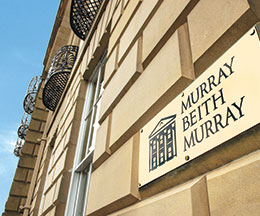 If you are in retirement, you will probably have given a passing thought to the possibility that, one day, you may require residential care. You might even have spoken to a professional advisor, whilst updating your will, or planning your future finances.
If you are in retirement, you will probably have given a passing thought to the possibility that, one day, you may require residential care. You might even have spoken to a professional advisor, whilst updating your will, or planning your future finances.
Recent statistics show only 5.5 per cent of those aged 75 and over live in long-term residential care. You might take some comfort from this, but in truth it tells you nothing about your own likelihood of entering care.
Technology exists to calculate your life expectancy and your chances of developing a debilitating condition. Life assurance companies already use a nifty algorithm to turn your personal risk factors into a monthly premium.
But anticipating your ability to continue living independently is much more complex. It may be some time before you can download a ‘care-home predictor app’ that takes account of genetics, lifestyle choices, health, mortality and personal support network, to produce a meaningful result.
If it is impossible to predict whether you will enter long-term residential care, future planning will necessarily be based on your own personal attitude towards risk. You should understand the potential impact of long-term residential care fees on your personal estate.
In Scotland, the average stay in long-term care is around 2.5 years, with average annual private fees of around £42,000 (including nursing care). Therefore the ‘average’ stay might cost upwards of £100,000. If your personal assets exceed the upper threshold (currently £26,500), you will not get state financial assistance and will be deemed to be ‘self-funding’.
You might view this as a fact of life. However, there are many and varied reasons why you will be reticent to pay care fees; you might feel it is manifestly unfair to be penalised at the end of your life for your earlier financial prudence; or you may simply want to preserve as much of your hard-earned savings for the future benefit of your children.
If you fall into the latter category, you may consider taking steps to reduce the exposure of your estate to care fees. Some people’s natural inclination is to reduce their personal capital (by making gifts, or settling assets into trust), to bring themselves within the upper threshold (or at least to limit the extent to which you exceed the threshold).
However, such action risks being treated as an intentional deprivation of capital assets, and scrutinised by your local authority. If you are deemed to have intentionally alienated your personal assets when the requirement for residential care was foreseeable, the local authority may, regardless, include the value of those assets within your estate for financial assessment.
It is important that there is a legitimate, demonstrable reason why assets have left your estate, for example as part of Inheritance Tax planning, or funding home improvements.
You may consider a more subtle approach, and couples often prepare their wills in such a manner as to ensure the efficient succession of their estate (particularly their main residence) should one or both end up requiring long-term residential care.
You may also investigate the availability of insurance (for example care bonds) to assist with care costs. Other, more aggressive, planning options exist, but should be treated with caution.
That said, we do not know how the political landscape will look in the future. It is possible that the upper threshold will be elevated, insulating a greater proportion of your personal estate from care fees.
We also have no idea of the availability, or standard, of care available to those in state-funded residential care.
It is worth looking at this through the eyes of an older, frailer you, and consider how much of your savings you would be prepared to sacrifice to access the highest standard of care.
Fraser Scott is a senior solicitor, Murray Beith Murray.